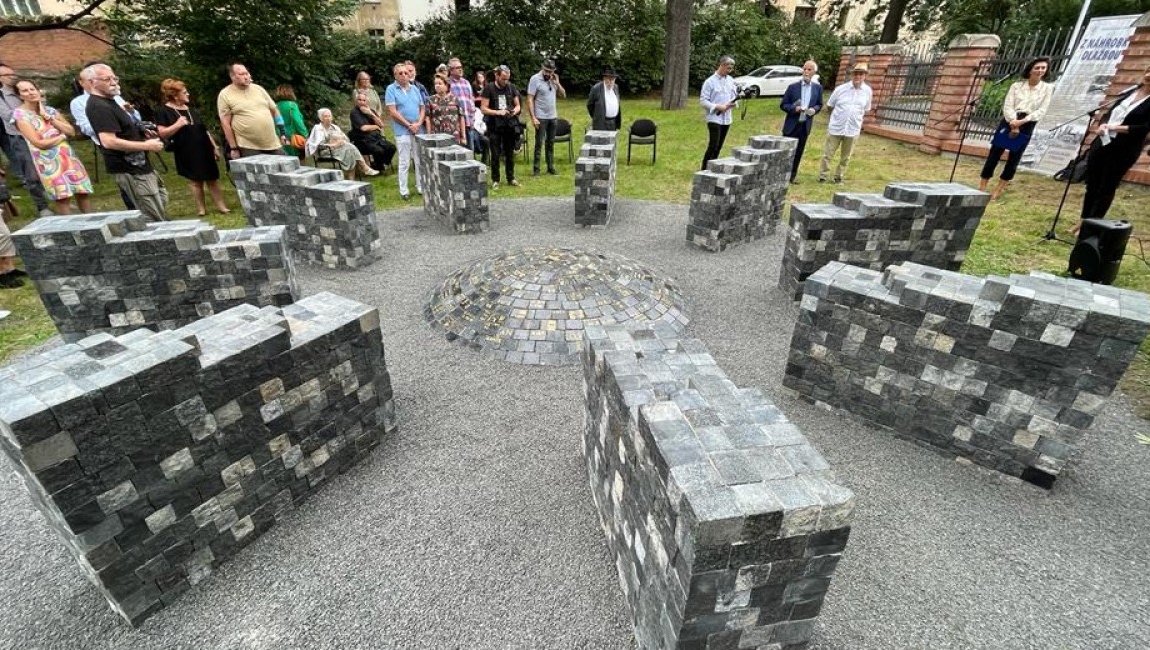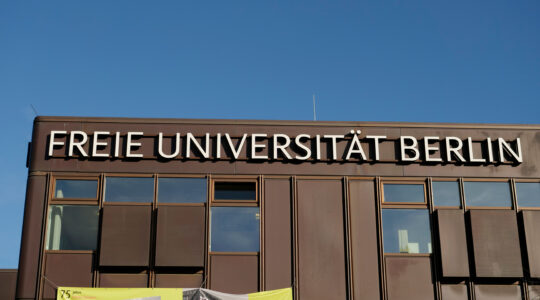(JTA) — During and after the decimation of Eastern Europe’s Jewish populations in the Holocaust, even the dead were not spared: Locals, their Nazi occupiers and their communist rulers looted Jewish cemeteries for headstones and used them to pave roads and build countless public buildings, including schools, park pavilions and even churches.
On Sept. 7, the Jewish community of Prague in the Czech Republic unveiled a new monument at its cemetery in an attempt to undo some of the damage. The monument consists of about 6,000 cobblestones made from Jewish headstones that were used in 1987 to pave Prague’s Wenceslas Square, the national broadcaster Česka Televize reported. The municipality handed over the stones to the Jewish community in 2020, after the stones were removed during renovations.
The community commissioned artists Jaroslav and Lucie Rona to build the monument, which cost about $32,000 and comprises a mound surrounded by nine blocks made up of the cobblestones. Although letters in the Hebrew and Roman alphabets can be seen on some of the stones, no individual headstone used to make the cobblestones was identified, according to the report.
In a speech at the unveiling ceremony, František Bányai, the chairman of Prague’s Jewish community, called the paving stones a “symbol of barbarism, rudeness and archaic ruthlessness.” The Jewish Cemetery in Žižkov, where the monument titled “Return of the Stones” was unveiled, was among the many Jewish cemeteries whose land was stolen under communism. Authorities built a television antenna on part of the cemetery, in violation of the Jewish tradition’s laws against disturbing places of burial.
The memorial is part of a wider effort across the region to address the desecration of Jewish cemeteries. Jews see the desecrations as having added insult to injury, because they targeted even the memory of communities wiped out by the Holocaust.
The use of headstones as building material has attracted media attention in recent years in several Eastern European countries with complicated Jewish histories.
In 2014, the municipality of Warsaw, the capital of Poland, returned to a Jewish community headstones that had been used to build a pavilion at a local park.
And last month, Jewish headstones that had been used to build stairs leading to the Evangelical Reformist Church in Vilnius, Lithuania, were returned to a local Jewish cemetery there following a years-long campaign by members of the city’s Jewish community.
JTA has documented Jewish history in real-time for over a century. Keep our journalism strong by joining us in supporting independent, award-winning reporting.






